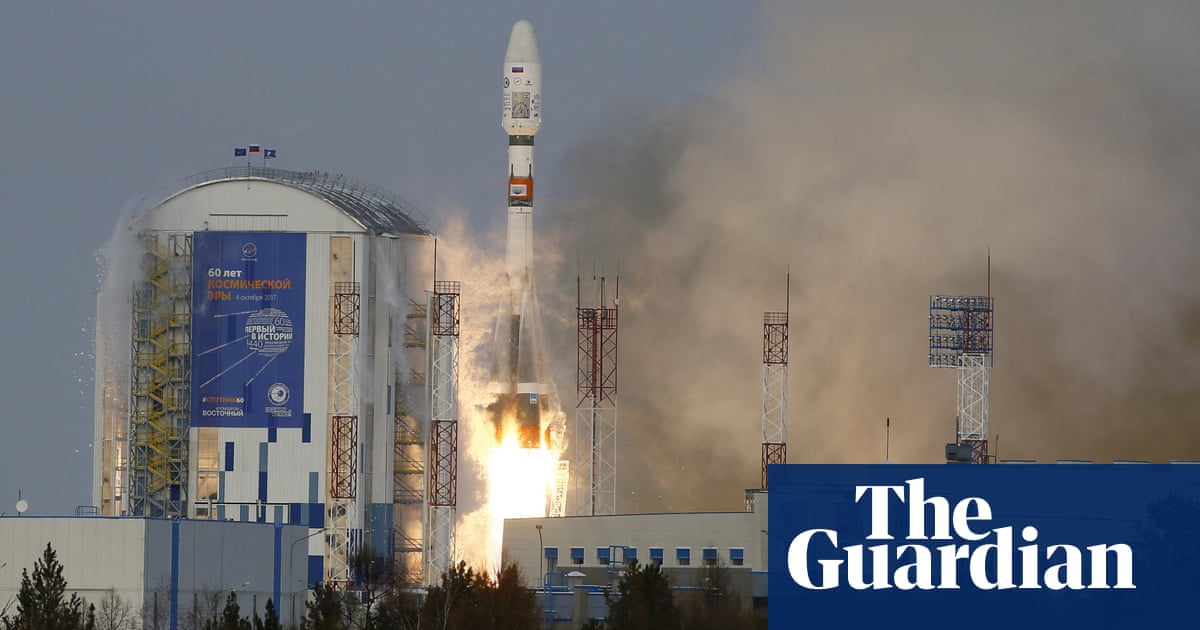A secretiveRussiansatellite in space that US officials believe is connected to a nuclear anti-satellite weapons program has appeared to be spinning uncontrollably, suggesting it may no longer be functioning in what could be a setback for Moscow’s space weapons efforts, according to US analysts.
The Cosmos 2553 satellite, launched by Russia weeks before invadingUkrainein 2022, has had various bouts of what appears to be errant spinning over the past year, according to Doppler radar data from space-tracking firm LeoLabs and optical data from Slingshot Aerospace, shared with Reuters.
Believed to be a radar satellite for Russian intelligence as well as a radiation testing platform, the satellite last year became the centre of US allegations that Russia for years has been developing a nuclear weapon capable of destroying entire satellite networks, such as SpaceX’s vast Starlink internet system that Ukrainian troops have been using.
US officials assess Cosmos 2553’s purpose, though not itself a weapon, is to aid Russia’s development of a nuclear anti-satellite weapon.Russiahas denied it is developing such a weapon and says Cosmos 2553 is for research purposes.
Russia has for decades been locked in a security race in space with the US that, in recent years, has intensified and seeped into public view as Earth’s orbit becomes a hotspot for private sector competition and military technologies aiding ground forces.
The Cosmos 2553 satellite has been in a relatively isolated orbit about 2,000km above Earth, parked in a hotspot of cosmic radiation that communications or Earth-observing satellites typically avoid.
LeoLabs in November detected what appeared to be errant movements with the satellite using Doppler radar measurements from its global network of ground stations. The company in December upgraded its assessment to “high confidence” that it was tumbling based on additional radar data and imagery of the satellite taken by another space company, Darren McKnight, a senior technical fellow at LeoLabs, told Reuters.
Russia’s defence ministry did not return a request for comment.
“This observation strongly suggests the satellite is no longer operational,” the Center for Strategic and International Studies, a Washington-based thinktank, said of LeoLabs’ analysis in its annual space threat assessment, published on Friday.
USSpaceCommand, which tracks objects in space and has condemned Russian military satellites in the past, said it was aware of a change in Cosmos 2553’s altitude but declined to provide further assessment on its current state.
The satellite earlier showed signs of odd behaviour. Slingshot, whose global telescope network has been tracking the spacecraft since its launch on 5 February 2022, detected movements in May 2024.
“Slingshot noted that the object’s brightness became variable, indicating a potential tumble,” a company spokesperson said.
But according to Slingshot’s latest observations, Cosmos 2553 appears to have stabilised, according to Belinda Marchand, the company’s Chief Science Officer.
Commercial space-tracking services are relatively young but fast-evolving and in high demand as the number of civil and military satellites in space soars.
The US defence department and other countries’ militaries, keen on avoiding military miscalculation, have made better eyesight in orbit a high priority to better distinguish between various types of spacecraft manoeuvres and whether objects are civil or military assets.
Russia, a US Space Command spokesperson said, has claimed Cosmos 2553’s mission is to test onboard instruments in a high-radiation environment, “but this does not align with its characteristics”.
“This inconsistency, paired with a demonstrated willingness to target US and allied on-orbit objects, increases the risk of misperception and escalation,” the spokesperson said.
Cosmos 2553 is one of dozens of Russian satellites in space with suspected ties to its military and intelligence programs. The country has viewed SpaceX’s Starlink, a formidable constellation of thousands of satellites, as a legitimate military target as Ukrainian troops use the service in conjunction with weapons on the battlefield.
